Kitchen Project #139: Baba Au Rhum
aka RUM BABA! by Camilla Wynne
Hello,
Welcome to today’s edition of Kitchen Projects. It’s so lovely to have you here.
Today, I’m handing the newsletter over to the brilliant Camilla Wynne for a recipe that I know you’ve all been waiting for on KP: Baba Au Rhum aka Rum Baba. Once I found out that Camilla is a total rum baba super fan, I knew she was the perfect person to explore this classic dessert. You’ll never need another baba recipe again!
Over on KP+, she is expanding the world of baba with a recipe for a Super Baba à l’Armagnac with coffee-soaked prunes, and a Maple Whisky Baba Loaf! Who needs tins anyway? Click here to read it.
What’s KP+? Well, it’s the level-up version of this newsletter. By joining KP+, you will support the writing and research that goes into the newsletter (including the commissioning - and fair payment - of all the writers), join a growing community, access extra content (inc., the entire archive) and more. Subscribing is easy and only costs £6 per month. Why not give it a go? Come and join the gang!
Love,
Nicola
PS. My book SIFT: The Elements of Great Baking has been out for a few weeks now and I love seeing you all bake from it! If you have a copy of SIFT and have enjoyed it, please could I ask you a favour and ask you to consider leaving a review on Amazon? You can still review it even if you didn’t buy your copy there. It helps other people find the book, too! Thank you so much :)
CAKE ON A PLATE POP-UP: SATURDAY 15TH JUNE
On Saturday 15th June, I’m teaming up with Nichola Gensler aka Burnt Crust Pottery at Leila’s Shop (Calvert Ave, Bethnal Green, London E2 7JP) for ‘Cake On A Plate’, a lovely collaborative pastry pottery pop up! (A pot up maybe?!)
Nichola is bringing a collection gorgeous plates and cups, perfect for pastries, tea and a slice of cake. On the day, from 12-4pm (or until sold out), come along and add some beautiful handmade pottery to your collection and try sweet and savoury bakes inspired by and from my book SIFT, too. There will be books for sale and I’ll be signing too.
I’m so proud to have these plates as part of my collection and I am really excited for this special event and will announce the menu soon! The plates will be £10 each and the ‘things on a plate’ (cake and. beyond) will be £5.
Lovely poster artwork and design by Benedict Leader aka @bby.leader ✨
BABA AU RHUM
If there are any 3 words on a restaurant menu that I’m incapable of resisting, it’s baba au rhum. A uniformly golden cylinder of rich yeasted bread (some call it cake,and it may have seemed cakey at the time, at least compared to a rustic loaf, but baba dough only has about half the eggs, a third of the butter, and a trifling 7% of the sugar in a traditional pound cake.) soaked in rum-laced syrup and served simply with gently whipped cream, the baba au rhum is simply perfection. It may seem deceptively simple to the naked eye, unadorned as it often is, but it’s been a classic for at least 189 hundred years because it’s so damn good it doesn’t need bells and whistles.
Legend has it that the baba au rhum was first sold in 1835 at Stohrer Rue Montorgueil, the first real Parisian pastry shop, founded by Nicolas Stohrer in 1730. He was pâtissier (or apprentice pâtissier, depending on who’s telling the tale) to the Lorraine-exiled king of Poland, Stanislaus I. Story goes the king brought a Gugelhopf to France with him but complained it was too dry, perhaps having become stale en route. Stohrer revived it with Malaga wine (or Tokay, again depending on who you ask), possibly adding saffron, raisins and crème pat to boot. It was a hit, and Stanislaus christened it after Ali Baba, being an avid fan of One Thousand and One Nights. From there, the creation traveled with Stohrer to Versailles, Stanislaus’ daughter having married Louis XV. Just over a hundred years after he founded his pastry shop in Paris, one of his descendants spiked it with rum, creating the baba au rhum we know and love today.
That’s the French story, which the great food writer Alan Davidson casts aspersions on in The Penguin Companion to Food, saying there are simply too many diverging accounts to be convincing. Who’s to say? What seems clear is that baba au rhum is a descendant of the much more ancient baba, an Eastern European Easter bread, though the baba au rhum has so eclipsed it in global popularity that it’s often just referred to as baba—no need for the rhum qualifier. It could very well have been a baba rather than a Gugelhopf Stohrer revived with booze—they are surely related too. And some suggest the baba is a descendant of Italian panettone. In fact, the baba au rhum became very popular in Naples, so perhaps this is all a sort of circular game of telephone, pastry edition.
At any rate, reviving old baked goods is nothing new—see diplomat pudding, bread pudding, French toast, and so on. But whoever had the idea to throw rum into the mix surely had a stroke of genius. Now we go forth and make the best version we can!
A note on raisins: During my research I discovered that it’s considered common to include raisins in baba dough, which I’d never before encountered. Frankly I found it shocking, though perhaps I shouldn’t, considering its origins. While I am an ardent lover of raisins and acknowledge their excellent affinity with rum, I don’t personally support this addition.That said, I might be open to a version with kirsch-soaked dried sour cherries. Actually I have one full of candied peel in my upcoming book, Nature’s Candy.
THE TIN
Classic baba au rhum are baked in baba or dariole molds—small, very gently tapered cylinders that give baba their recognizable shape. But if I don’t own baba molds, then it’s unlikely much of anyone else does. And that’s ok! The shape of the baba has always been a little in flux. There were Imperial Russian copper baba molds as high as 16 inches tall. Imagine tucking into one of those!
If you’re looking to reproduce the traditional baba without the traditional mold, you’ve got options. The best I’ve come up with is an 8-cavity popover pan, as it’s the right shape, but you do end up with slightly jumbo babas (not necessarily a bad thing). What’s more, I realize most people aren’t particularly more likely to have a popover pan than they are dariole molds.
Fortunately, I also tested the recipe in vessels you’re likely to own: muffin tins, mini muffin tins (for cute baby babas), straight sided glass jars and mini Bundt pans. (Ok fine, you probably don’t have mini Bundt pans. There’s also a loaf pan variation, but more on that later.)
The good news is they all worked more or less respectably. I found the shape of the mini Bundts charming, but quite large. Could be nice as a romantic baba-for-two situation. The glass jars (2.5-inches diameter, 2.25-inches high) yielded a much more baba-like shape than the muffin tins and are a good substitute for the popover pan. I didn’t test it, but you could always try a nice cylindrical cleaned out tin, maybe from olives or tomato paste!
Portioning dough in different tins, with yields for master recipe:
Mini muffin: 20 g each yields 24
Muffin: 40 g each yields 12
125 mL jar: 60 g each yields 8
Popover: 60 g each yields 8
Mini Bundt: 60 g each yields 8
THE SYRUP
The syrup is basically half of a baba au rhum, totally imbuing the cake and thus all-important. But just how sweet should it be? Rather naturally, I thought a lighter syrup would be nicer—it is, after all, a lot of syrup, and I worried it would be too sweet. What’s more, respectable sources such as French pastry chef Christophe Michalak use a light syrup. My first test used a 2:1 ratio of water to sugar, but ultimately I found it tasted waterlogged. The sugar needed to be increased to amp up the flavor of the very gently sweetened baba and to bring more viscosity to the syrup. I landed on a nearly 1:1 ratio.
But what of the rum? Many recipes add the rum directly to the warm syrup, which is what I tried first. I appreciated the convenience, and that the rum imbued the baba entirely. If you’re not, however, serving the babas immediately or eating them all at once, you may want to reheat the syrup, which degrades the flavour of the rum each time. What’s more, if you have syrup left over and no use for it, it’s a pricey discard. Nor does everyone favour the same dosing. In the end I embraced the free-pouring spirit of my second semester pastry school teacher (a very grumpy old French man, but shockingly generous with the alcohol in his cakes). I sprinkle a few tablespoons on the split baba before serving, then bring the bottle to the table so enthusiasts may embellish.
THE SOAK
Texturally there are few things I find more horrible than wet bread, specifically the flabby, pale, pasty corner of a sandwich made with wet fillings that’s sat too long. Ever since I was a kid I’ve been uptight about keeping the tomatoes and lettuce apart, to be inserted last minute, if it’s going to be a few hours until the sandwich is consumed. This texture is the exact one we are trying to avoid when we introduce the baba to the syrup!
Researching how long to soak the babas—and when—didn’t get me much of anywhere. Recipes run the gamut from submerging in boiling syrup just until no more air bubbles are released to combining the baba and syrup at room temperature for two hours. I tried every combination of hot and cool syrup and baba to see what worked best.Initially I thought I’d start at 5 minutes, then continue to increase timing, but found that 5 was sufficient for all but the cool baba/cool syrup combo.
The results
Ranked from worst to best:
Last Place: Hot Baba/Hot Syrup: You know the wet sandwich bread I just mentioned? This is that. No good! The hot syrup penetrated the hot cake still unstable from the oven and ballooned into a swollen mass. To be fair, they probably could’ve done with less time, but even initially they seemed destabilized, jumping from the proverbial frying pan into the fire. It makes sense that they would benefit from cooling and solidifying their structure before meeting a liquid.
Third Place: Cool Baba/Cool Syrup: Even after two hours, this baba had soaked up the least syrup of all, making it clear that heat lubricates the process. It never achieved optimum saturation, plus it took ages.
Second Place: Hot Baba/Cool Syrup: Initially I was satisfied with this attempt. But examined next to the winning specimen I noticed it kept its shape less well, becoming slightly misshapen from absorbing the syrup, no doubt because it hadn’t yet had time for its form to firm up. As well, after a little time had passed it seemed to dry out subtly, likely having absorbed less syrup since its own volatile moisture had yet to dissipate.
First place: Cool Baba/Hot Syrup: Perfection. A quick dunk of a fresh, cooled baba in hot syrup (either freshly prepared or reheated) is a dream. Its structure solidified, the cooled baba can become plumply rich with hot syrup in just 5 minutes without losing its shape and still be served warm. Plus, it’s much easier to prepare ahead of time.
SERVING
I’ll tell you up front that I am old school in this respect. I want to see a baba slit lengthwise, the canyon spooned full of softly whipped cream, with perhaps just a little extra syrup pooling in the dish. This is how you’ll often find it served in classic bistros, though they will rarely set down a bottle of rum on the table, as I like to (in case anyone thinks you’ve under seasoned).
But the baba’s life as a bakery item has led to all sorts of different presentations. You’ll often see them shiny with apricot glaze in order to seal in moisture and be better seen through the glass of the pastry case. A garnish of stabilized cream or other toppings are often piped on like little hats, with a jaunty pipette full of booze jammed in as well. I’m certainly not saying these can’t be superlative, but I can often resist buying a bakery baba, which is not the case at all when I see the word on a restaurant menu. That said, if you want to take them on the go, it’s a good option.
There’s a school of thought that believes baba should be served warm to contrast the cold whipped cream with which it’s served. The method of soaking room temperature babas in hot syrup lends itself well to this application, as long as they’re served à la minute, which is a doddle after dinner. Just reheat your pre-made syrup and dunk your babas once hot.
KEEPING
The benefit of the room temperature baba/hot syrup method is that you really can make them to order. Unsoaked baba can be kept, wrapped well, for a day or two at room temperature before soaking, or even frozen for a few months. The syrup will keep in the refrigerator for months, so this is a great solution for the baba lover who wants to bake a batch and then savor one weekly over the course of a few months. But keep in mind that it can take significantly longer to soak a baba when not fresh.
A matter of one or two days at room temperature was fine, but past that I thought it better to soak, drain and refrigerate fresh baba to enjoy later than to keep around and soak stale (unless frozen fresh and defrosted). Drained soaked baba keep well in the refrigerator for a few days, and if you’re desperate to serve them warm, 30 seconds in the microwave should do the trick.
RIFFING
As a base, the baba is ripe for riffing on everything from the shape to flavoring the syrup to switching up the accompaniments. And, yes, I suppose you could add raisins back into the baba itself. Maybe.
The Recipe: Baba au Rhum
This is my best classic recipe, but don’t forget you can always embellish to your heart’s content! And feel free to use different molds (see The Tin). If you prefer not to let your unruly guests near a full bottle of rum, you can add 200 mL to the syrup just before soaking (or to taste).
Makes 8 babas
For the Babas:
70 g whole milk
210 g bread flour
15 g caster sugar
8 g instant yeast
½ tsp salt
2 eggs, about 100g at room temperature
75 g unsalted butter, at room temperature
For the Syrup:
450 g water
375 g sugar
To Serve:
Amber or dark rum, for pouring
Softly whipped cream, for serving
Method
To make the babas, in a small saucepan or the microwave, warm the milk to just warm, 100°F to 110°F (38°C to 43°C). Set aside.
In the bowl of a stand mixer, combine the flour, sugar, yeast, and salt. Fit the mixer with the dough hook, add the warmed milk and eggs, and mix on low speed until combined. Increase the speed to medium and let the mixer knead the dough for 5 to 10 minutes, until the dough is smooth and elastic. Add the butter 1 tablespoon at a time, mixing until incorporated. Let the dough rest for 10 minutes at room temperature.
Meanwhile, grease an 8-cup popover pan or 8 straight-sided jars. Preheat the oven to 375°F (190°C).
Once the dough is done resting, divide into 60 g balls. Roll them on a clean countertop as you would buns, then plop one into each cavity of the popover pan. Cover with a clean towel and let rise in a warm place until the dough doubles in size, about 30 minutes. Bake the babas for 15 to 20 minutes, until golden brown and an instant-read thermometer inserted in the center reads 210°F (99°C). When the babas are ready, immediately remove them from the popover pan and transfer to a wire rack to cool.
To make the syrup, in a medium saucepan, bring the water and sugar to a boil. Remove from heat. When the babas are cool but the syrup is still warm, throw the babas in for 5 minutes, occasionally submerging and turning them (you’ll likely need to do this in batches). If you want to check for syrup penetration, simply slice one open. Remove with a slotted spoon to a wire rack set over a rimmed baking sheet to drain. Serve immediately, or within a few hours. If not serving in that timeframe, store in an airtight container in the refrigerator for up to 2 days.
Just before serving, slice the babas lengthwise and sprinkle generously with rum. Spoon some whipped cream down the center. Bring the bottle of rum to the table so guests can add more to taste.
For two variations on the baba, Super Baba à l’Armagnac with coffee-soaked prunes, and a Maple Whisky Baba Loaf! click here.



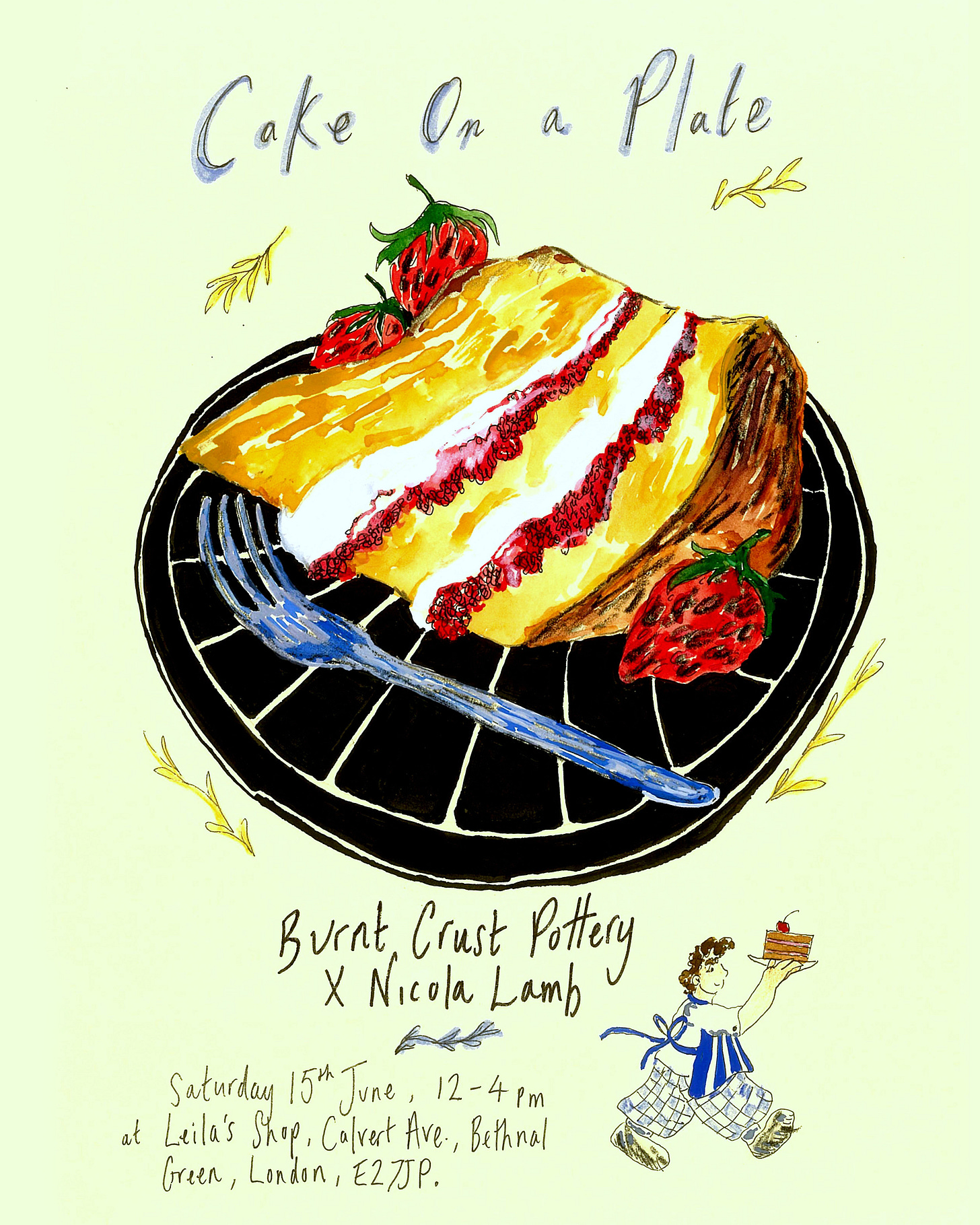
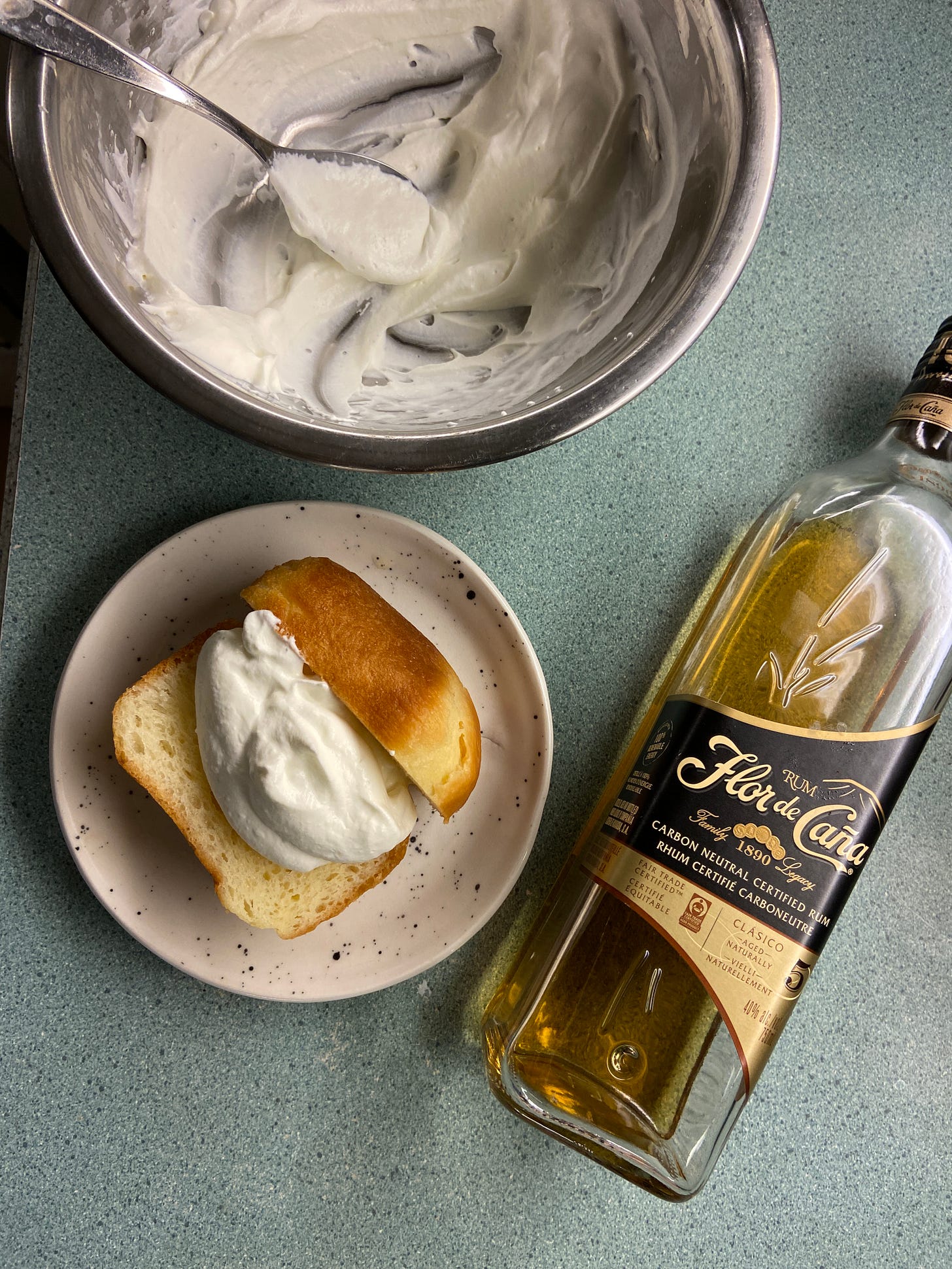
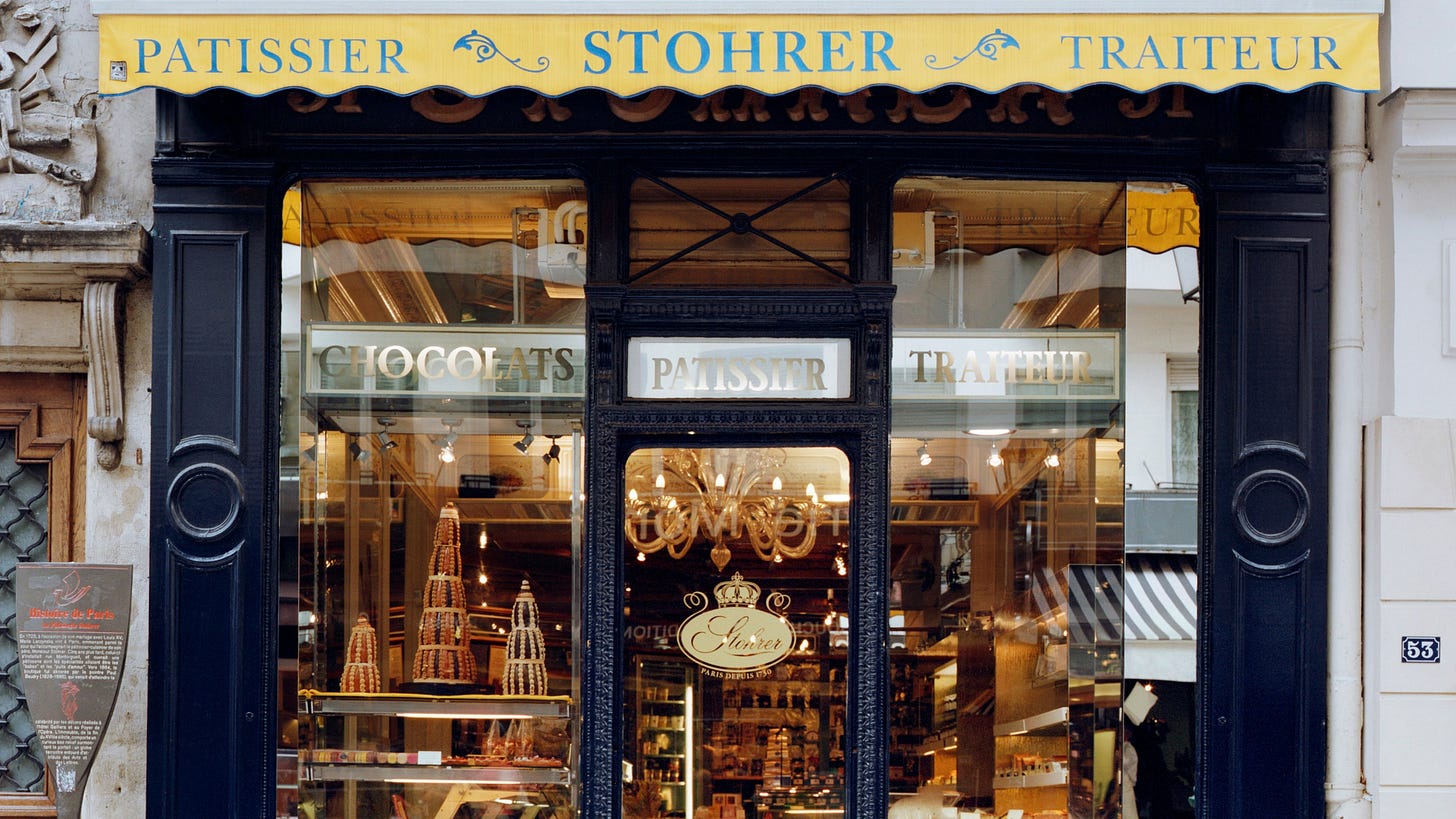
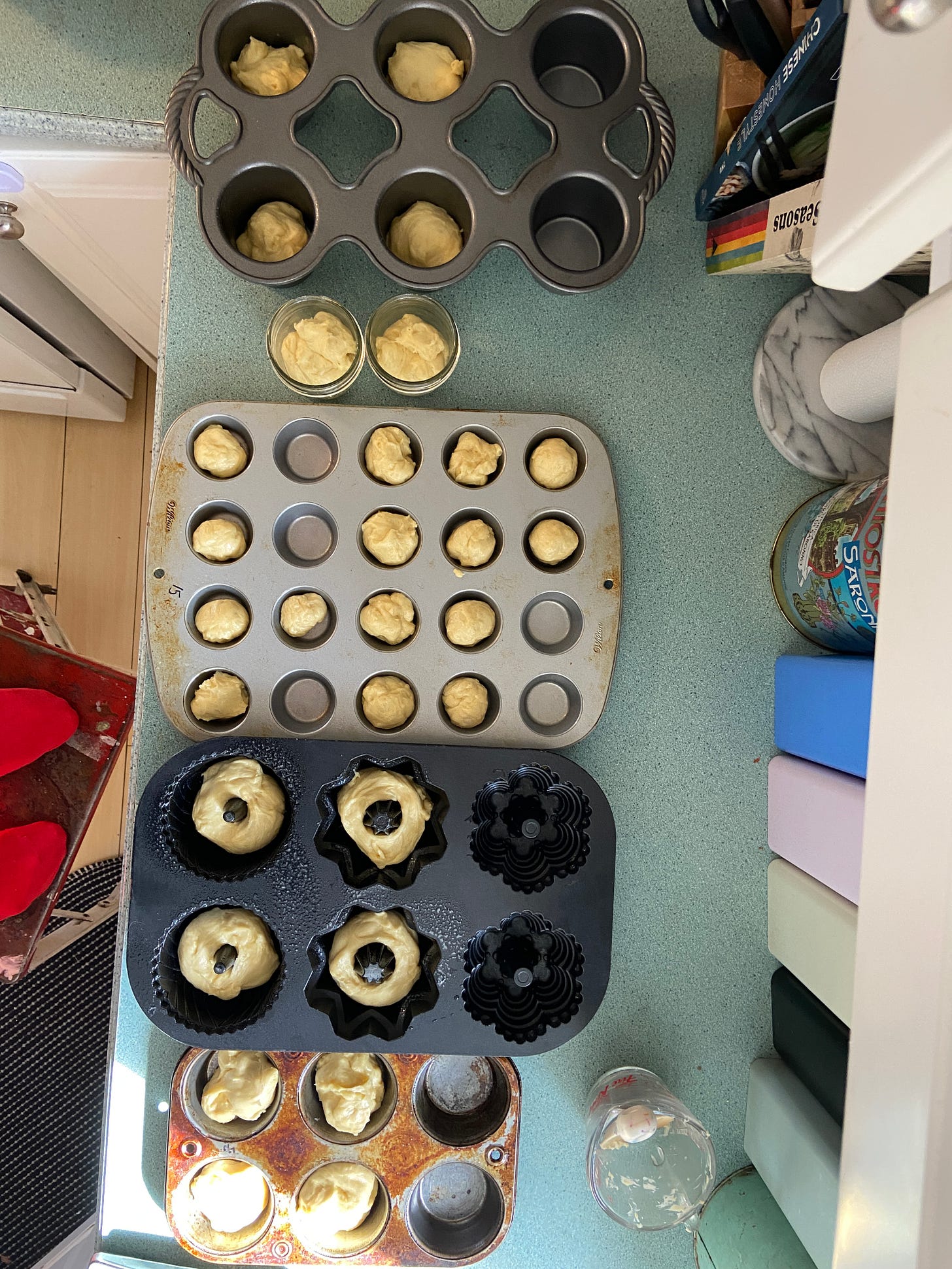
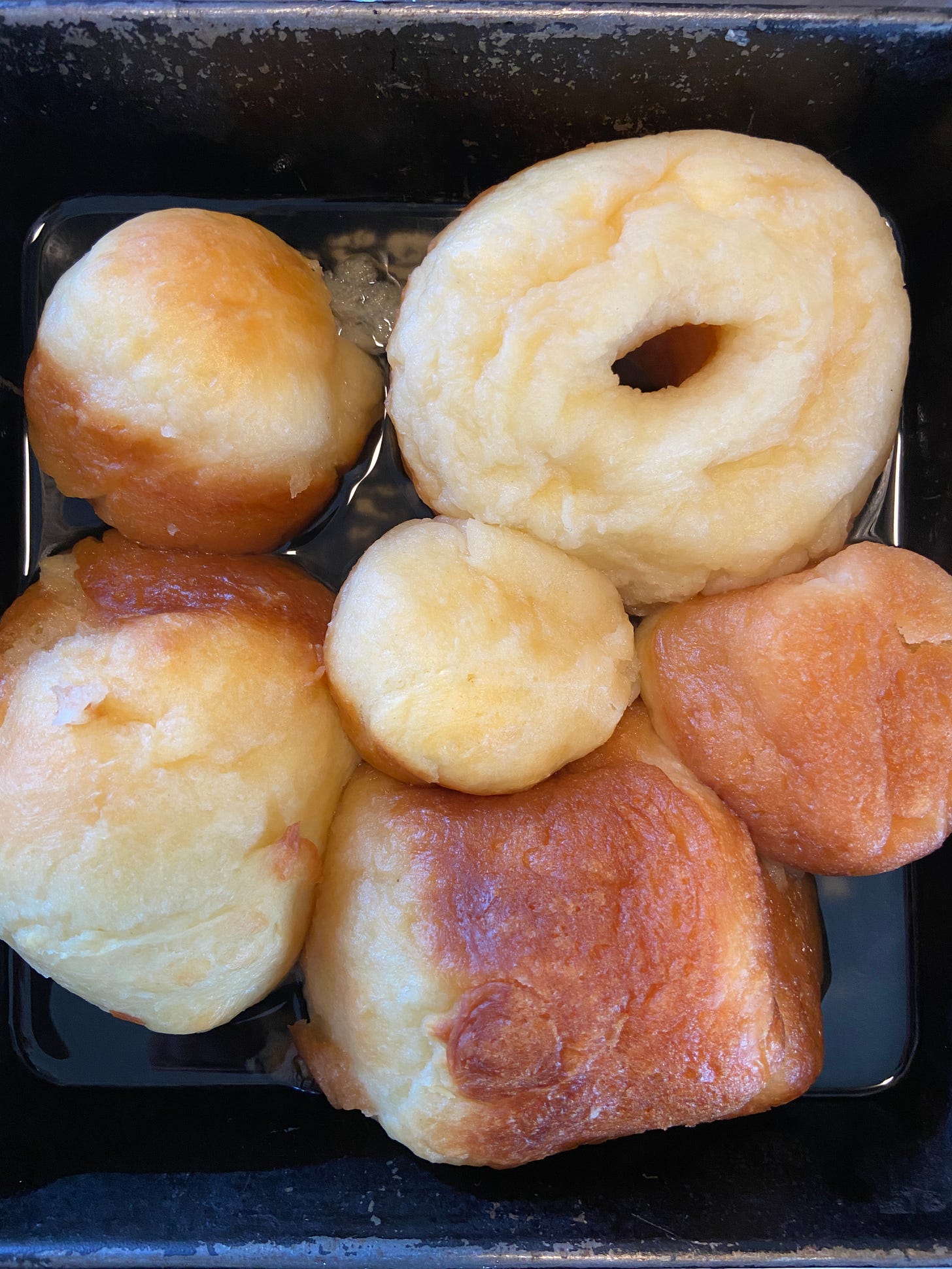
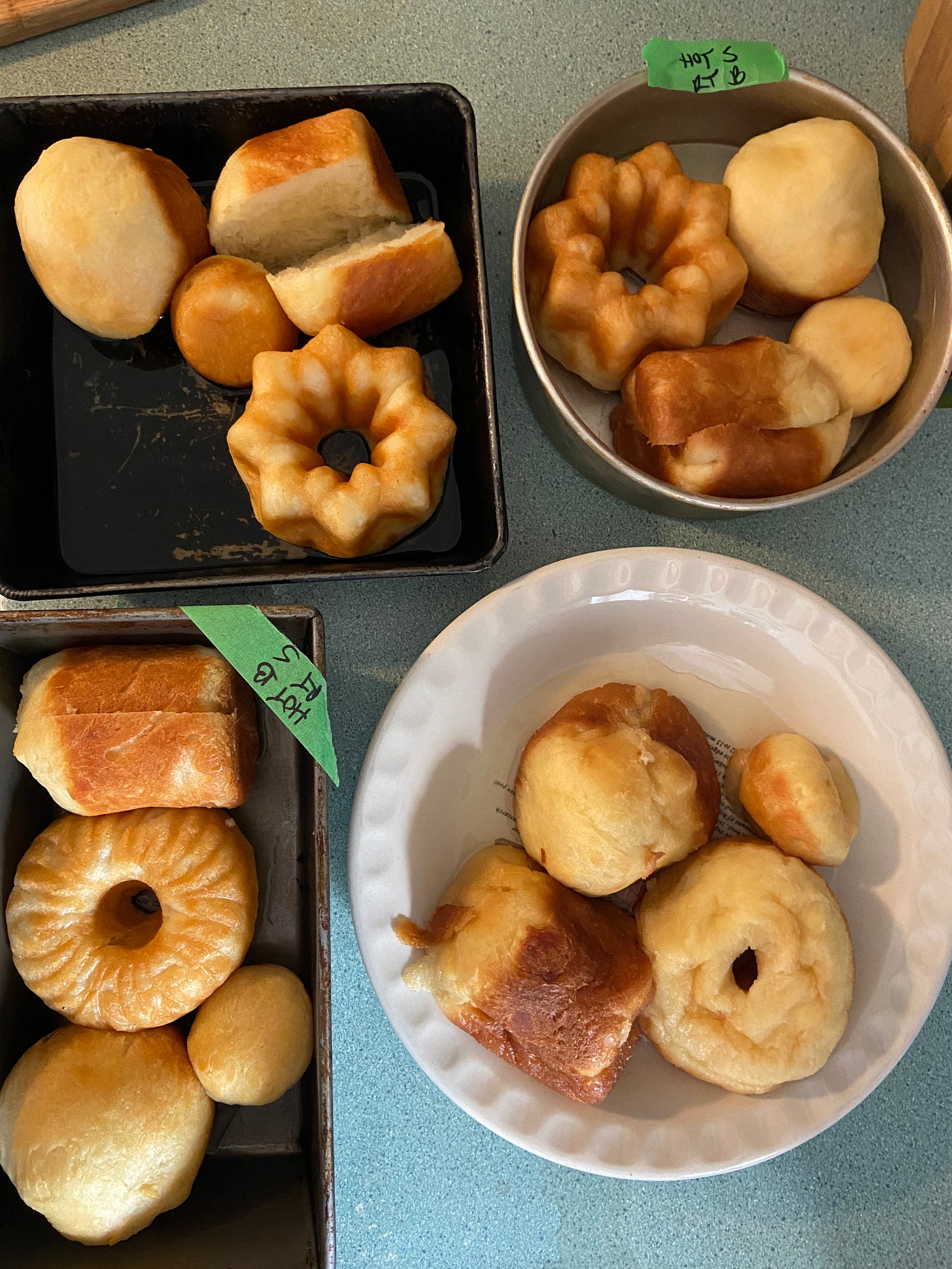
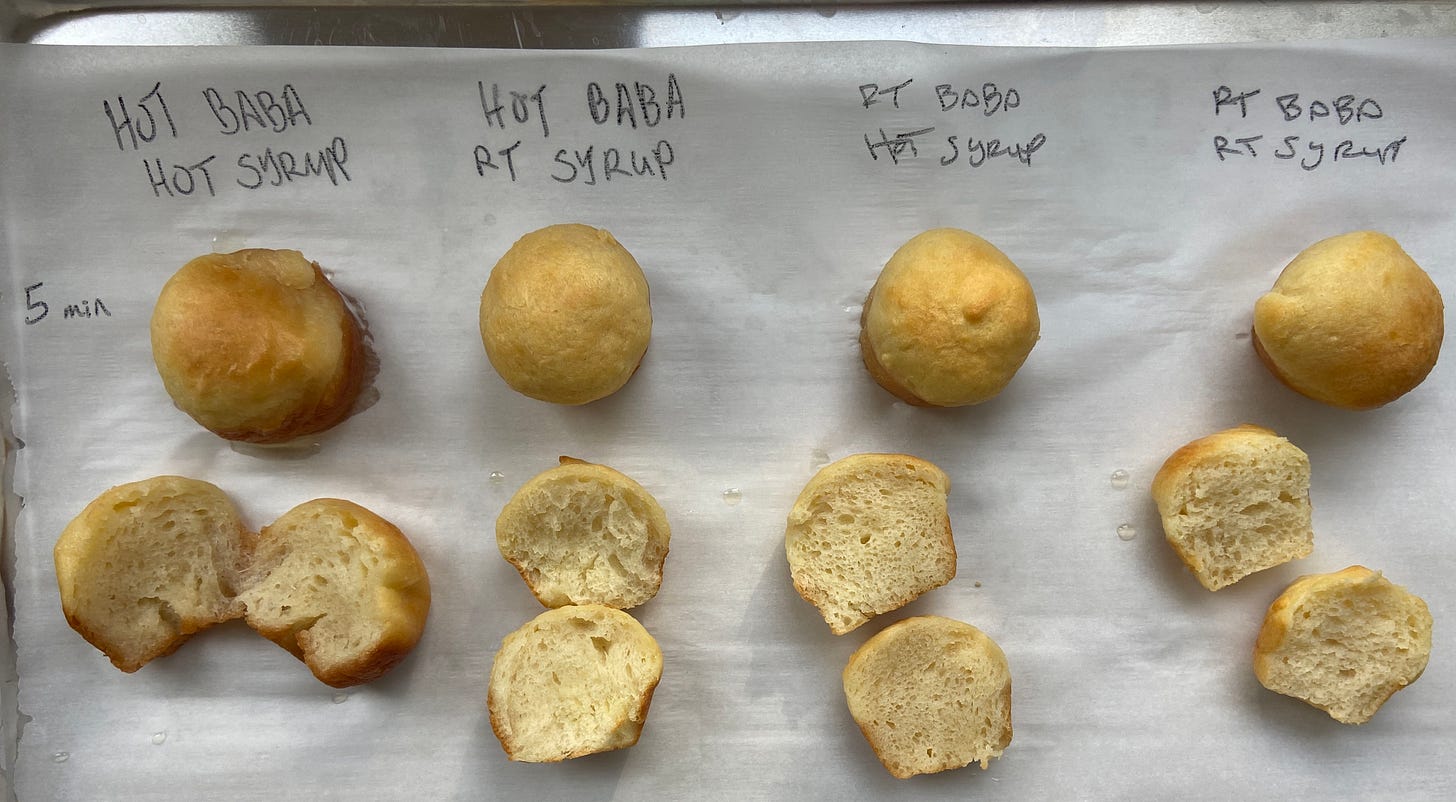
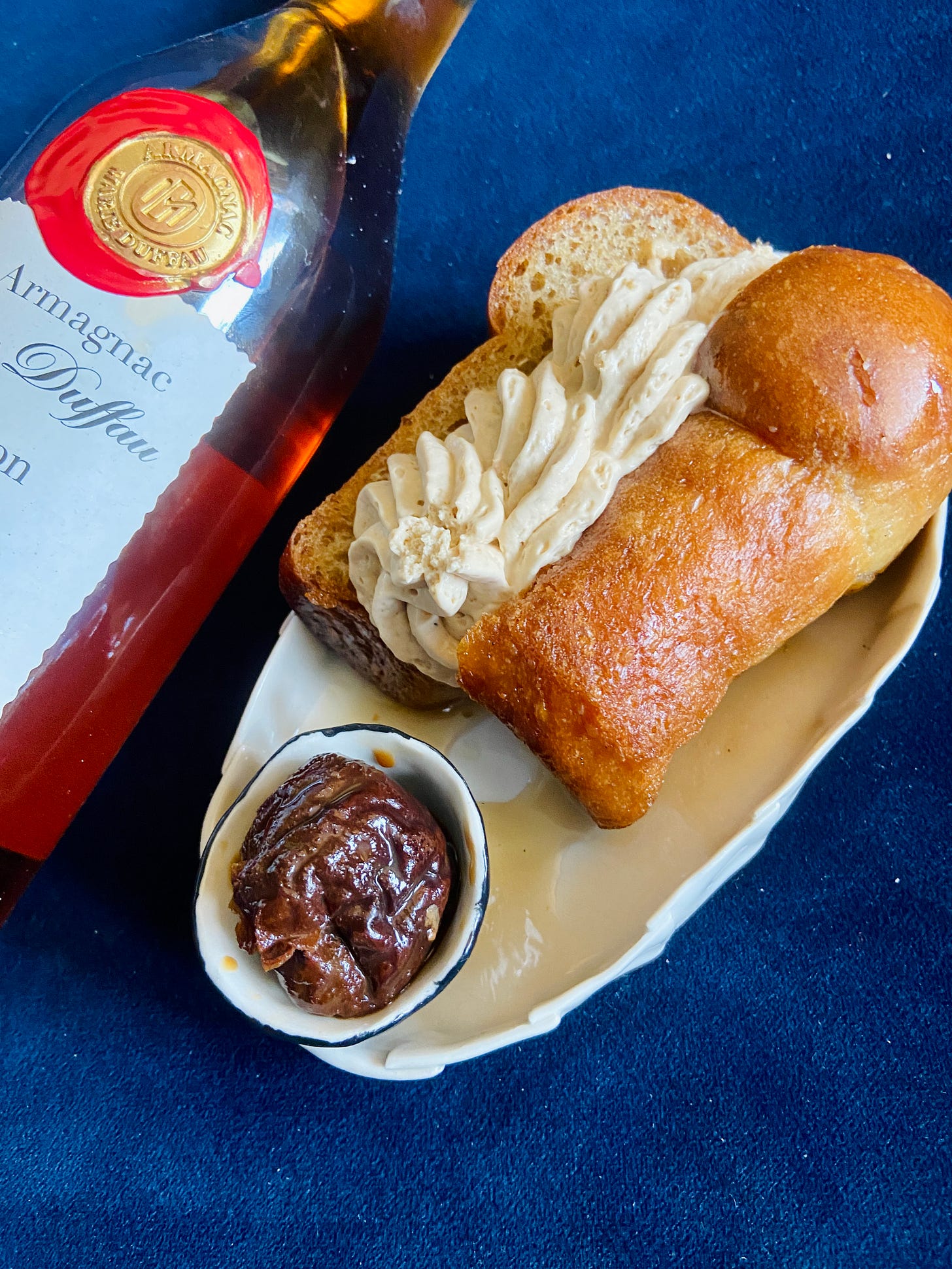
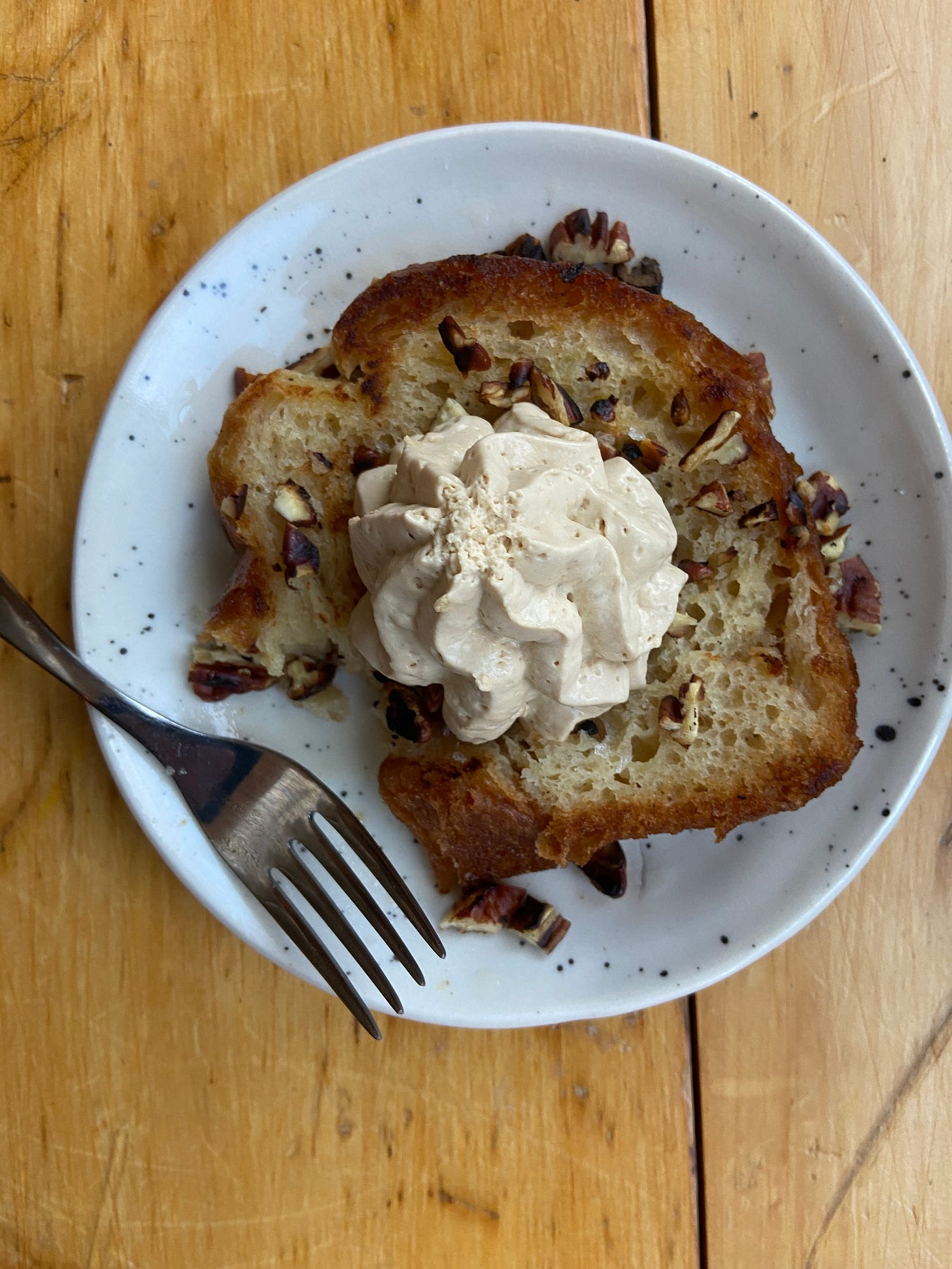

I had completely forgotten about Baba Au Rhum! We made it for restaurant week when I worked at Cafe Boulud in New York City in it's hey day, and I made (and ate) it in the south of France often when I worked as a private cooking instructor there. Yet, I haven't eaten or made it in 20+ years! Thank you for this blast from the past. I can taste, smell and see it, and feel myself at 22 years old.
I love making these. Discovered an Italian recipe using orange juice and rum to soak. Also had some tiny round babas is a dessert in France recently which were simply intensely flavoured with lemon. Delicious!